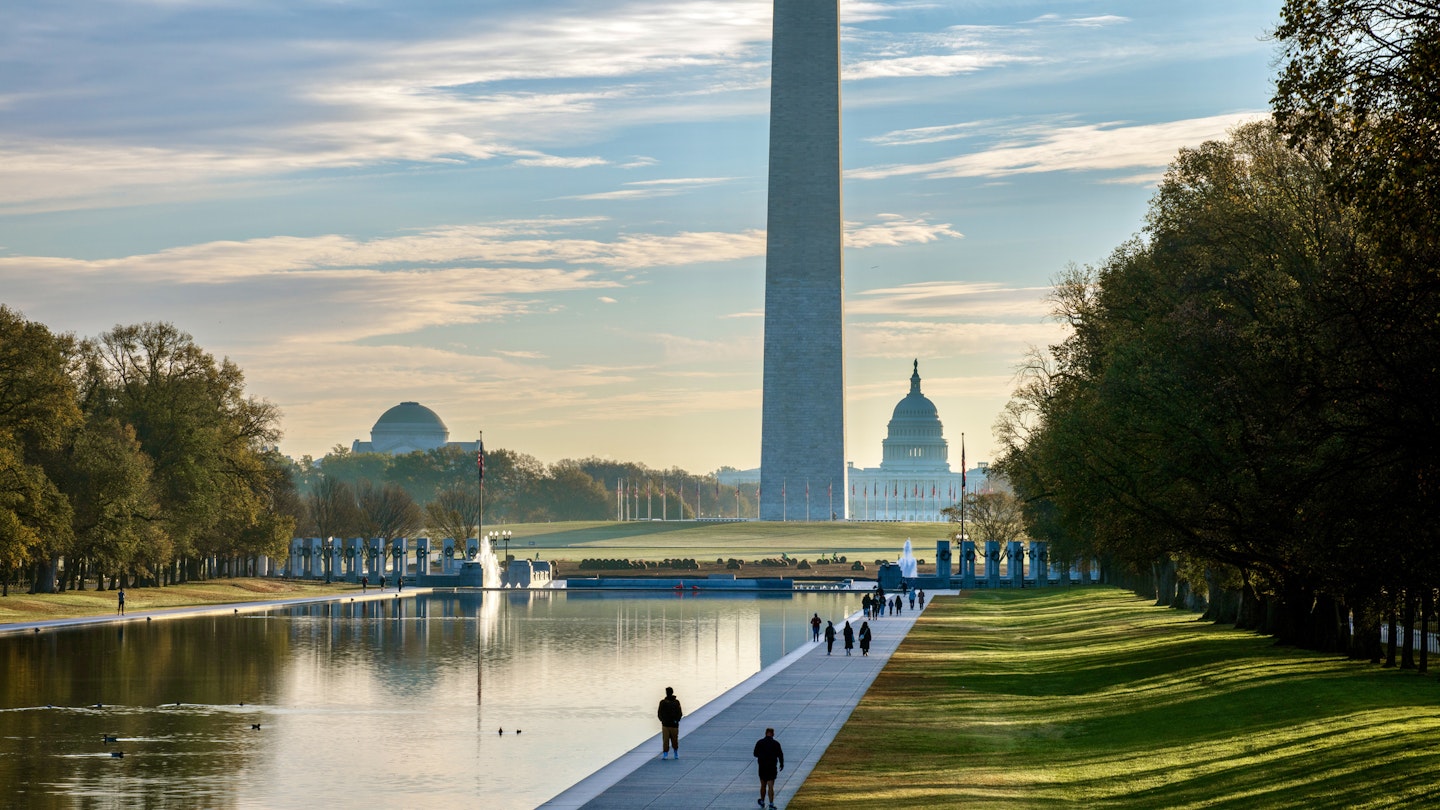Washington, DC combines the best of all worlds – a highly walkable grid system expertly designed by the French, alongside a reliable Metro that connects travelers across the District and beyond.
Moreover, with dedicated bike lanes and trails, navigating around Washington, DC offers numerous options. Your biggest dilemma will likely be figuring out which transit option to choose. Here’s an overview of how to navigate the capital of the US like a local. The best part is that you don’t really need a car.
Stretch Your Budget by Taking the Bus
One of DC’s most affordable and eco-friendly options for exploration is by bus. The Washington Metro Authority (WMATA) is focused on achieving a zero-emissions fleet by 2042, beginning with two 60ft electric buses currently in service.
The Metrobus links neighborhoods with finer precision than the Metrorail. Regular route fares cost just $2, and you’ll benefit from unlimited bus-to-bus transfers for two hours. The ease of paying your fare with the SmarTrip app on your phone’s wallet streamlines the process. While WMATA has a solid transit app, Google Maps also provides helpful bus integration for directions and wait times.
For tourists, the DC Circulator presents an affordable option, allowing you to hop on for just $1 while exploring many of DC’s iconic tourist sites, museums, and neighborhoods.
Utilize the Extensive Bike Lanes and Trails
Capital DC Bikeshare makes cycling around the city a breeze with regular bike and e-bike rentals. You can get a day pass for $8 that offers unlimited 45-minute rides on a classic bike for 24 hours. Alternatively, an e-bike day pass is available at $0.10 per mile. With over 700 stations across the DC metro area, finding a dock is easy, and managing your rental is straightforward through the Capital DC Bikeshare mobile app. Popular spots for cycling include the National Mall and the Tidal Basin, or try the Mt. Vernon loop or C&O Canal trails for a longer ride.
See the City from a New Perspective on a Water Taxi
DC’s waterfront areas are gems worth exploring. Hop aboard the Potomac Water Taxi for a scenic view or visit various locations. Trips start at $22 one-way. While this may seem steep, consider it more of a sightseeing opportunity than a taxi service. Kids under two can ride for free, and you can hop on and off at popular spots like District Wharf, Old Town Alexandria, National Harbor, and the Georgetown Waterfront from March to December.
If you’re looking for a unique and free sailing experience, the District Wharf Jitney offers a five-minute ride across the channel to East Potomac Park, a favored view for cherry blossoms.
Explore Washington, DC with Metrorail
Traveling around DC is easy thanks to its straightforward Metrorail system. Offering six color-coded lines — red, green, yellow, blue, silver, and orange — the Metro connects you to 98 stations across DC, Maryland, and Virginia.
Using different colors helps minimize confusion when transferring lines; just double-check that you’re on the correct platform heading in the right direction. You’ll find plenty of signs to guide you, along with the iconic multi-colored metro map displayed within every train and station.
Your metro fare depends on distance, time of day, and the journey. Riding during off-peak hours can save you some money, but keep in mind that the metro runs limited hours on Sundays through Thursdays until 12am, and Fridays and Saturdays until 1am.
Local tip: Metro is continuously improving, so occasional closures or long wait times may occur. Always check the SmarTrip app or WMATA’s status page before heading out.
Your SmarTrip Card: Connecting You Throughout the City
Your golden ticket to accessing DC’s transit system is the rechargeable fare card known as a SmarTrip card. This card allows you to pay for transit across the greater DC metro area, including Maryland and Virginia. Acquiring a card is easy; you can purchase one at any Metrorail station, Metro retail store, or via mobile payment services like Apple or Google Pay.
SmarTrip covers fares on all WMATA transit options, including Metrorail and Metrobus, along with regional transit partners. You may save money by purchasing a 1-, 3-, or 7-day Unlimited Pass, which starts at $13. However, remember that these passes don’t cover rides on transit partners like the DC Circulator unless you purchase a separate 7-day regional bus pass for $12.
Opt for Ridesharing to Avoid the Parking Dilemma
Finding parking in DC can be challenging and expensive. Street parking is limited in popular neighborhoods like the Wharf and Adams Morgan, and securing a spot can take time. To avoid the stress of searching for parking, consider using rideshare services such as Uber or Lyft. While taxi services exist, they are becoming less common in the area, with DC Yellow Cab still operational.
Washington DC Transportation FAQs
Is DC a walkable city?
Yes, DC is generally a walkable city. Some neighborhoods, like the National Mall or the Wharf, are particularly straightforward to navigate, often making walking more efficient than using public transit. Google Maps is an excellent tool for real-time walking directions.
Should I rent a car for my DC visit?
Renting a car can be more of a hassle rather than a benefit, particularly due to the traffic and expensive parking. Given the variety of accessible transit options available, renting a car is generally unnecessary unless you plan on taking day trips outside the city.
Is Washington, DC accessible?
DC strives to ensure accessibility for all visitors. Both Metrorail and Metrobus offer accommodations for all travelers, which include free and reduced fares for seniors and those with disabilities, wheelchair-accessible elevators at every rail station, and MetroAccess, a service for individuals unable to use standard transit methods.





